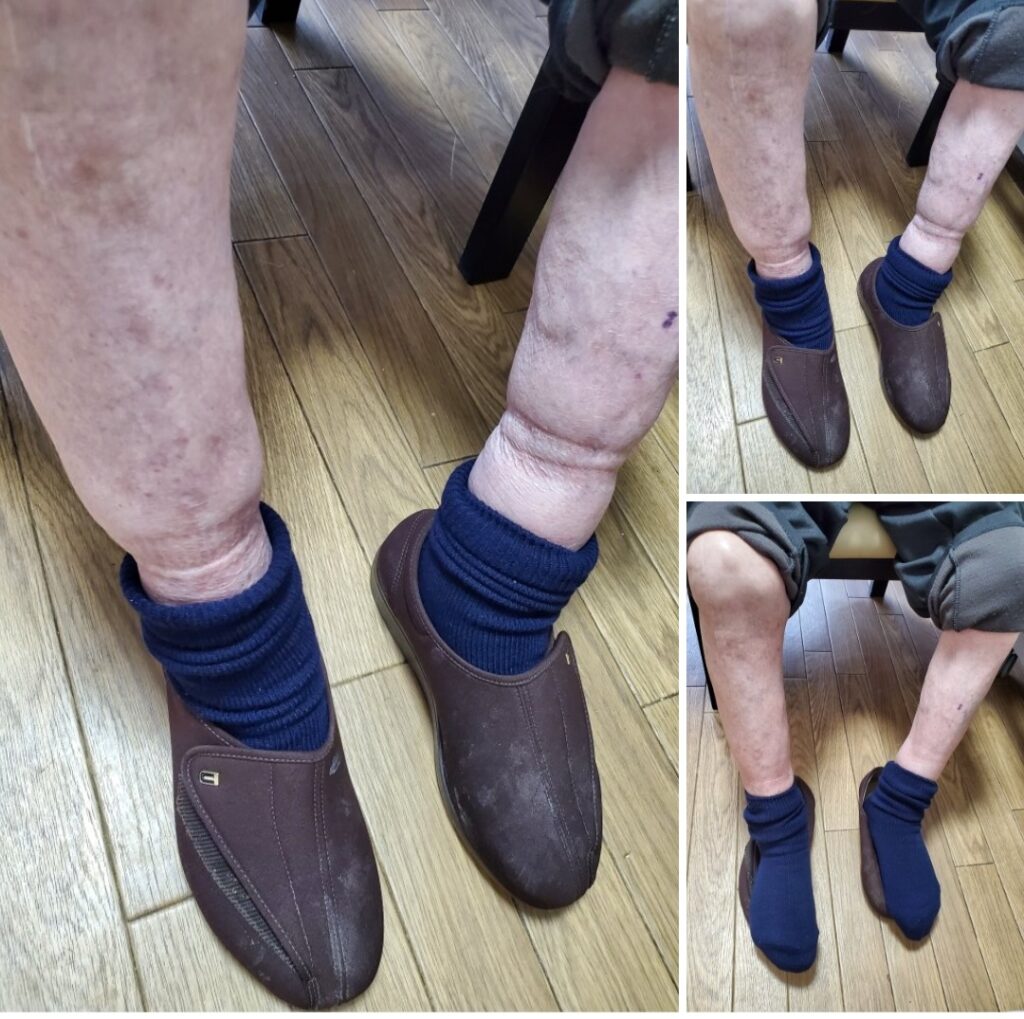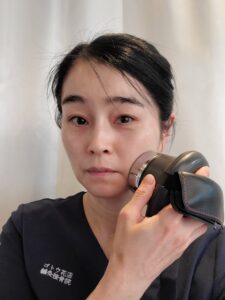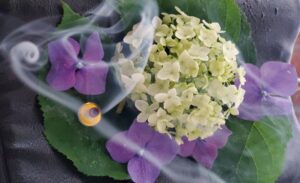高齢者 足のむくみ
Elderly person, swollen feet
人間の血液は、心臓から全身の細胞へ、動脈という道を使って酸素や栄養分を届け、同時に細胞から排出された二酸化炭素や老廃物を回収、静脈という道を使って心臓に血液を戻します。この流れの中で、足から心臓に戻る血液は、重力に逆らって心臓に戻ります。そこで血液を戻すためのポンプの役割を果たすのがふくらはぎの筋肉です。人間の下半身には全体の70%の血液が集まっています。ふくらはぎの筋肉が動くことで血液を心臓に戻します。つまり血液を心臓に戻すには、ふくらはぎの筋肉を伸び縮みさせる必要があります。これが、高齢者になると運動不足などで、ふくらはぎで血液が停滞して足がむくみます。筋肉が衰えがむくみ体質になる原因になっていきます。高齢者の方で車いす生活など、ずっと同じ姿勢の状態でいると、ふくらはぎの動きが少なくなり、筋肉の収縮作用によるポンプ機能がうまく働かず、その結果、足の血液が心臓に戻りにくくなり、うっ滞してむくみに繋がり、痛みがでることがあります。(下の写真のように靴下の跡がいつまでも残ります)。、むくみに対しては、マッサージでの治療が副作用がなくおすすめです。
Human blood delivers oxygen and nutrients from the heart to cells throughout the body using a pathway called an artery, simultaneously collecting carbon dioxide and waste products expelled from the cells, and returning blood to the heart using a pathway called a vein. In this flow, blood from the legs returns to the heart against gravity. The calf muscles then play the role of pumping the blood back to the heart. The human lower body collects 70% of the total blood. The calf muscles move to return blood to the heart. In other words, to return blood to the heart, the calf muscles must stretch and contract. In the elderly, lack of exercise and other factors cause blood to stagnate in the calves, resulting in swollen feet. The weakening of the muscles becomes the cause of swelling. When elderly people are in the same posture all the time, such as in a wheelchair, the calf movement is reduced and the pump function by muscle contraction does not work well, which makes it difficult for blood to return to the heart, resulting in stagnation and swelling, which can cause pain. (As you can see in the picture below, sock marks remain forever.) Massage treatment is recommended for swelling without side effects.

#浮腫み #むくみ #足のむくみ #swollenlegs #swollenfeet #swollen


